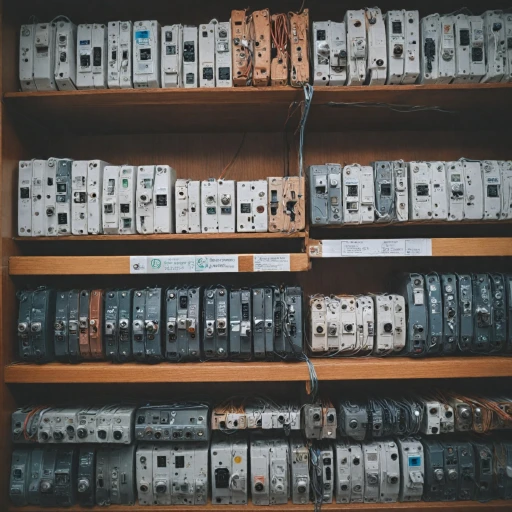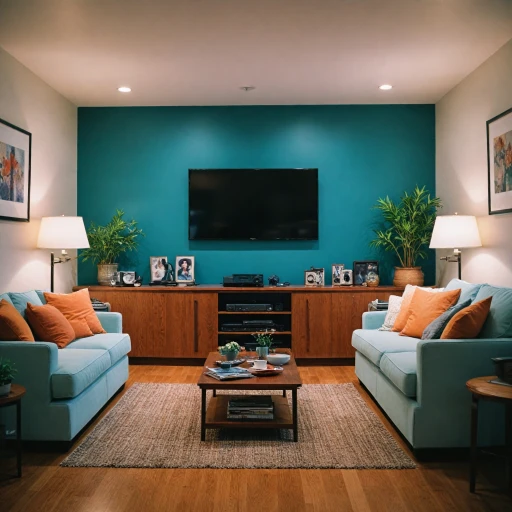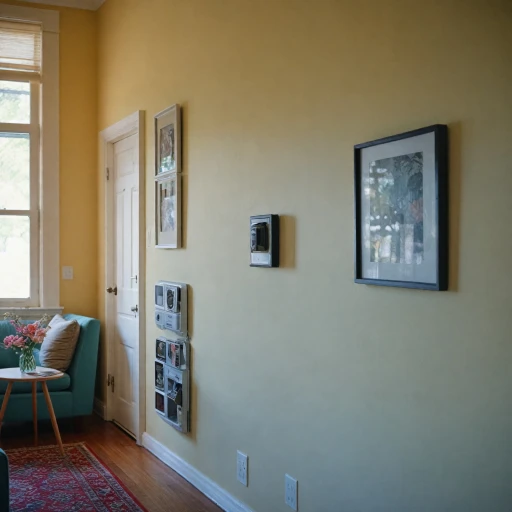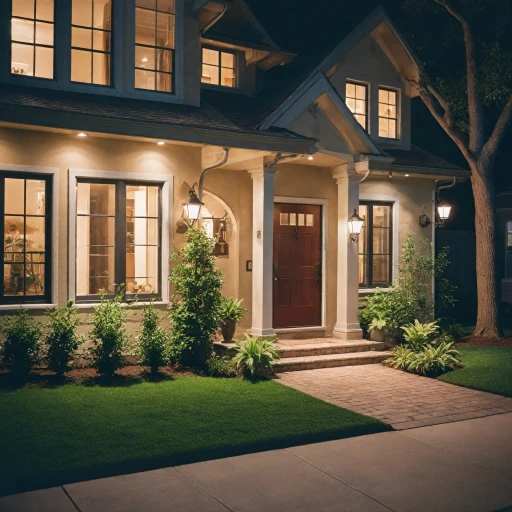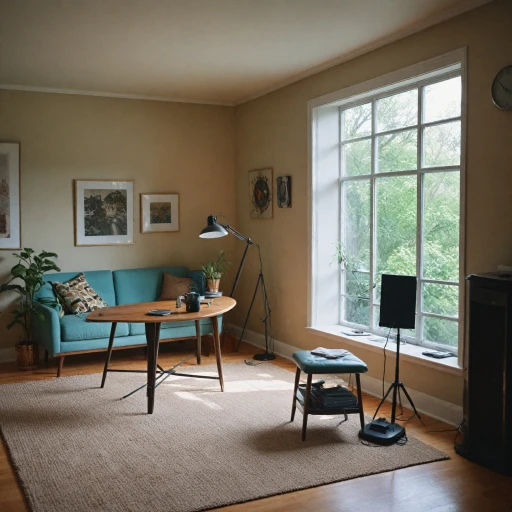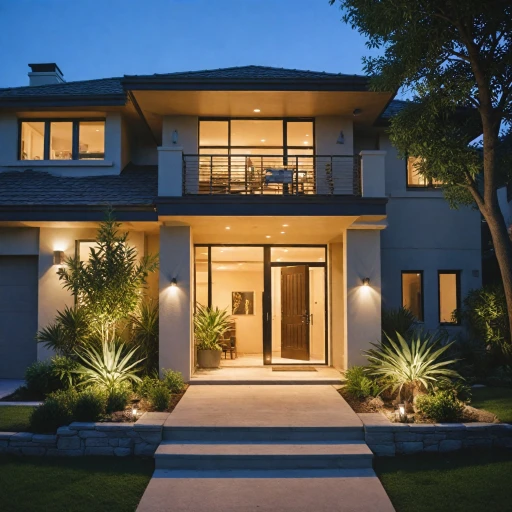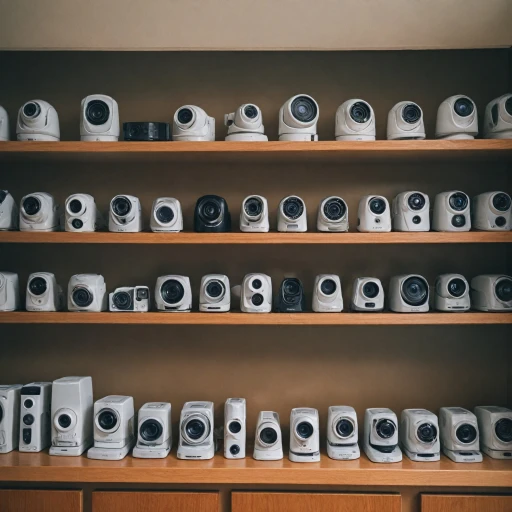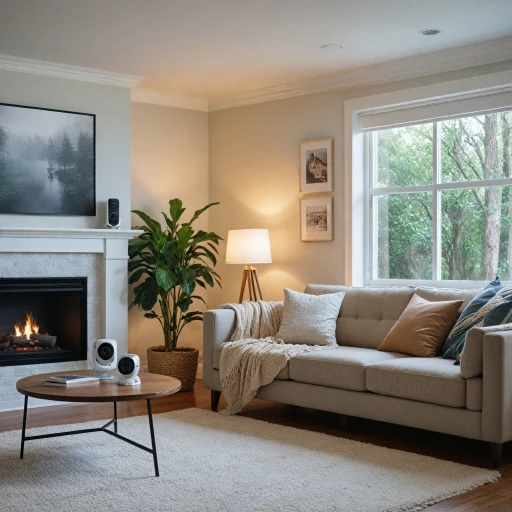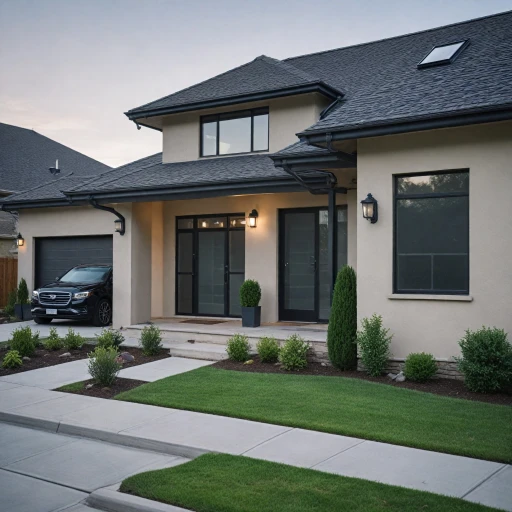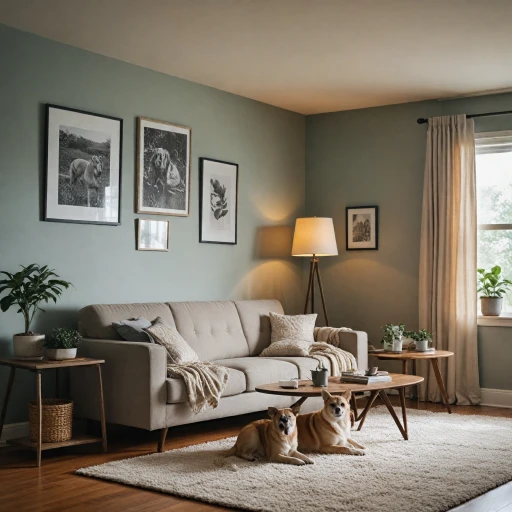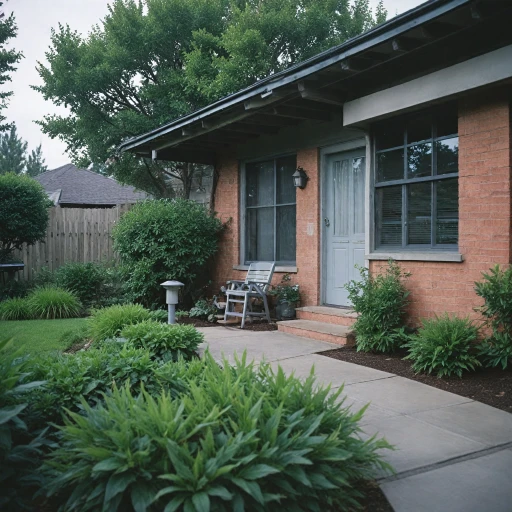Understanding the Basics of an Eight-Camera Security System
Introduction to Eight-Camera Security Systems
When it comes to safeguarding your home, an eight-camera security system can offer comprehensive coverage. 🎥 But where should you start?
An eight-camera setup is perfect for larger homes or properties where thorough monitoring is necessary. It ensures that every corner of your home, both inside and out, is covered. 💪 Whether you're setting up these cameras indoors or outdoors, they provide increased safety and peace of mind.
Components of the System
Such systems typically include several important components:
- Cameras: You’ll have a choice between bullet cameras for focused coverage and dome cameras for expansive views.
- Recording Device: Either a DVR security system or an NVR security system is essential to store your video footage. Each has its advantages, with DVR typically used for analog cameras and NVR for digital ones.
- CCTV Connectivity: Systems can be wired or use Power over Ethernet (PoE), eliminating the need for separate power cables.
- Storage: It's important to choose a system with a high-capacity hard drive to accommodate extensive high-definition video recordings.
- Audio Capabilities: Cameras with built-in microphones can transmit both video and audio, providing more context.
Making the Most of Your System
Harness the potential of your security cameras with features like night vision, motion detection, and cloud connectivity. Human detection capabilities can also reduce false alarms.
Curious about whether a 16-channel NVR system might be a better fit for your needs? Check out our detailed discussion on maximizing home security with a 16-channel NVR system to see how it stacks up.
Key Features to Look for in an Eight-Camera System
Essential Features in a Comprehensive Security Solution
When you're in the market to enhance your home's security with an eight-camera system, it's crucial to evaluate a few key features that ensure a comprehensive solution. As you navigate through the various options, these elements should be top of mind:- Video Quality: The clarity of the footage is paramount. Whether you're considering bullet or dome cameras, opt for systems that offer high-definition video. This is particularly important for night vision functionality to guarantee clear images in low light.
- Human Detection: Modern systems incorporate advanced human detection technology to reduce false alerts triggered by non-human movements. It's a feature worth considering for more precise monitoring.
- Storage Capacity: Evaluate the hard drive size in DVR and NVR setups. A larger drive allows for more extensive video archiving, which is vital if you require long-term storage or high-resolution video recording.
- Audio Capabilities: Some security systems come with built-in microphones that enable you to incorporate audio surveillance, adding an extra layer to your security protocol.
- Power-over-Ethernet (PoE) Support: This feature simplifies installation by enabling cameras to receive both power and data through a single network cable. It's a boon for reducing the complexity and cost of wiring.
- Channel Configuration: Ensure your system has enough channels to support all potential camera additions, including future expansions. A channel NVR that accommodates all connected units without a hitch is ideal.
- Price Add-ons: Be wary of the regular price of camera systems versus special price deals. Sometimes, initial savings can lead to higher costs down the line if essential features need additional purchases.
Installation Tips for Your Eight-Camera Setup
Optimizing Your Setup for Maximum Coverage
When setting up an eight-camera security system, it's essential to achieve optimal coverage for comprehensive protection. Here’s a guide to help you maximize the potential of your security cameras:- Assess Your Property: Begin with evaluating the vulnerable points in your property. Consider entrances, windows, dark alleys, and any other spots susceptible to unauthorized access. Mapping these areas will assist in strategic camera placement.
- Positioning: To cover blind spots and reduce overlap, stagger your cameras. The combination of bullet cameras and dome cameras can offer varied coverage. Install bullet cameras in areas requiring long-distance observation and dome cameras in areas needing wide-angle views.
- Height and Angle: Mount your cameras at a height that deters tampering while providing a clear view. Adjust the angles to ensure there are no gaps in the coverage. Lens with adjustable focal lengths can help in achieving the desired field of view.
- Consider Environmental Factors: Weather conditions can affect video quality. Ensure your cameras are weatherproof, especially in outdoor setups. For areas with low-light conditions, select cameras with night vision capabilities.
- Power Supply Essentials: Establish a reliable power setup. For a comprehensive understanding of powering your security cameras, refer to this guide on camera power supply.
- Network Considerations: If employing a PoE (Power over Ethernet) system, confirm your network's capacity to support all cameras. The right NVR with the adequate number of channels and sufficient video storage on a hard drive is crucial.
Comparing Wired vs. Wireless Eight-Camera Systems
Wired or Wireless? Making the Right Choice
When deciding between a wired and wireless eight-camera security system, it’s crucial to consider your specific security needs and home setup. Both options have their own sets of benefits and limitations, so assessing what works best for your home is essential.
Wired Systems: These systems are a traditional choice for many homeowners. They generally offer a more reliable connection, which is important for consistent video streaming and recordings. A wired camera system connects via cables that transmit video and audio signals directly to an NVR (Network Video Recorder) or DVR (Digital Video Recorder), where data is stored on a hard drive. One major advantage is that these systems often support high-quality video channels and can integrate POE (Power Over Ethernet) technology, which simplifies installation by using a single cable for both power and data transmission. However, the installation process of a wired system can be more complex and time-consuming, requiring professional setup to handle extensive cabling.
Wireless Systems: On the other hand, wireless systems offer a more flexible and easier installation process since they rely on Wi-Fi networks to transmit video and audio signals. This makes them a popular choice for homes where running extensive cables is not feasible or desirable. They are often easier to expand; you can quickly add cameras as needed without the need for additional wiring. However, wireless systems might be susceptible to interference, especially if the Wi-Fi network is unstable or experiences traffic congestion. For optimal performance, ensure that your Wi-Fi network is robust and can support the additional load from the camera system.
In essence, your choice between wired and wireless systems will depend on your home’s layout, budget, and whether ease of installation or reliability is your priority. Consider consulting with a security expert to assess your home’s specific needs and suggest the most suitable camera system configuration for maximum safety and cost-efficiency.
Maximizing Security with Smart Technology Integration
Smart Technology Integration: Elevating Your Eight-Camera Security System
Incorporating smart technology into your eight-camera security system can significantly enhance the overall security of your home. With advancements in technology, there are several options available that will maximize the effectiveness of your system. Firstly, look for security cameras that support smart home integration. Systems compatible with platforms like Google Home or Amazon Alexa allow you to manage your security cameras through voice commands or smartphone apps. This is not only convenient but also enhances the control you have over your surveillance setup. Another essential feature to consider is the human detection capability. With this technology, your cameras can differentiate between human movements and other types of motion, reducing the number of false alerts you receive. Night vision is another critical smart feature to consider. Ensuring your cameras have high-quality night vision technology means your property remains under surveillance even in low-light conditions. Also, think about integrating your NVR (network video recorder) or DVR (digital video recorder) security system with cloud storage. This will allow for footage to be backed up off-site, ensuring that it remains safe from local hardware failures or intentional tampering. For those interested in minimizing visible equipment, opting for dome cameras can be an effective choice. These provide a more discreet appearance while offering full coverage. Moreover, many modern camera systems now offer audio capabilities, allowing you to capture not just video but sound as well. This feature can add another layer of information useful for security purposes. Finally, selecting systems with PoE (Power over Ethernet) cameras can simplify installation by eliminating the need for separate power cables, proving particularly useful in larger properties. Utilize these smart features to bolster your security framework, ensuring you get the most out of your investment and safeguard your home more effectively.Budgeting for an Eight-Camera Security System
Making Sure Your Financial Investment Works for You
Budgeting for an eight-camera security system is pivotal in ensuring that you get value for your money. Many factors should guide you to strike the right balance between cost and functionality.- System Type: Deciding between a wired or wireless system is crucial. Wired systems like DVR security often require more extensive installation, which could impact initial cost. However, wireless options may have higher maintenance expenses in the long run.
- Storage Solutions: Consider the type of storage, whether an NVR with a hard drive or a standalone DVR security. A system hard drive with ample capacity is essential for retaining footage, especially if you opt for full HD video. Assess if the additional cost of enhanced storage options with a higher channel NVR is necessary for your needs.
- Special Features: Look at the price add of systems providing night vision, human detection, or audio capabilities. While features like dome cameras or system bullet cameras with advanced lens options and cameras audio might increase the initial price, they contribute significantly to comprehensive security solutions.
- Camera Types: Different types of cameras, such as bullet, dome, or the newer PoE cameras, bring about variation in cost. The choice between these options should align with your property's specific security needs while managing the overall price effectively.
- System Expansion: Future-proofing your system by reserving channels for additional cameras is wise. Make sure the system can be scaled easily, preferably with PoE cameras that allow adding more units without substantial rewiring, if necessary.

